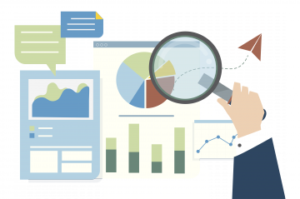 Cloud technology adoption throughout the HR industry has accelerated over recent years, especially in response to the Covid-19 pandemic. That is because organisations had to move quickly to provide innovative solutions to ensure their teams stayed connected and could tap into tools to make sure everything remained ‘business as usual’ when the climate was anything but.
Cloud technology adoption throughout the HR industry has accelerated over recent years, especially in response to the Covid-19 pandemic. That is because organisations had to move quickly to provide innovative solutions to ensure their teams stayed connected and could tap into tools to make sure everything remained ‘business as usual’ when the climate was anything but.
And while the success of the cloud is nothing new to digital natives, what it has enabled HR leaders to do is work smarter, log-in from anywhere – with only a browser required – and access critical information at the click of a few buttons.
However, despite these technological advancements, for decades many HR leaders working in ‘traditional’ organisations have continued to cope with inefficient and expensive processes.
They have been manually inputting data into multiple spreadsheets – something that is not only time-consuming, but which can potentially increase the chance of human error. Add to this limited reporting capabilities, with data that was soon out of date by the time it was downloaded, and it is easy to see how inefficient and inaccurate the process had become.
HR professionals without intuitive solutions in place have effectively been operating in the dark for years and making decisions without having the critical evidence they need because they have not had access to real-time, actionable insights. Rather than having one version of the truth, many leaders have instead been left with several options.
Medium-large sized businesses now have a greater level of choice with their software
But there is change occurring, particularly for medium-large organisations, with comprehensive tools now offering the vital elements an HR leader needs to do their job more effectively.
For example, savvy employee relations (ER) case management platforms can help HR teams to log and manage their in-house matters – providing insight and proactive alerts so professionals know exactly where each case is, and how they are progressing. Additionally, the more sophisticated systems can provide the data to help leaders identify key trends, and respond where necessary.
When armed with accurate, real-time data, HR managers can better understand employee capacity, and assign actions, as well as spot any gaps and decide on the type of response required – whether that is to bring in additional staff or offer specific training to upskill colleagues.
All this insight helps HR leaders to have full visibility of their organisation, and compile far more detailed reports to present back to the board about how they can enforce positive change. Savvy cloud technology solutions can liberate decision making, and hopefully ensure that labour-intensive processes – such as manually created spreadsheets – will soon become a thing of the past.
When entering a new role and only having a few months to impress, first find out what the business’s current tech stack and reporting capabilities look like, and map out ways in which they can be improved. By addressing this early, the right software can drive organisational transformation.
If you enjoyed this blog, we cover the topic of ER case management tools in more detail in our free guide that is available today. Download your copy of 7 employee relations (ER) priorities an HR leader must focus on in their first 90 days here.



